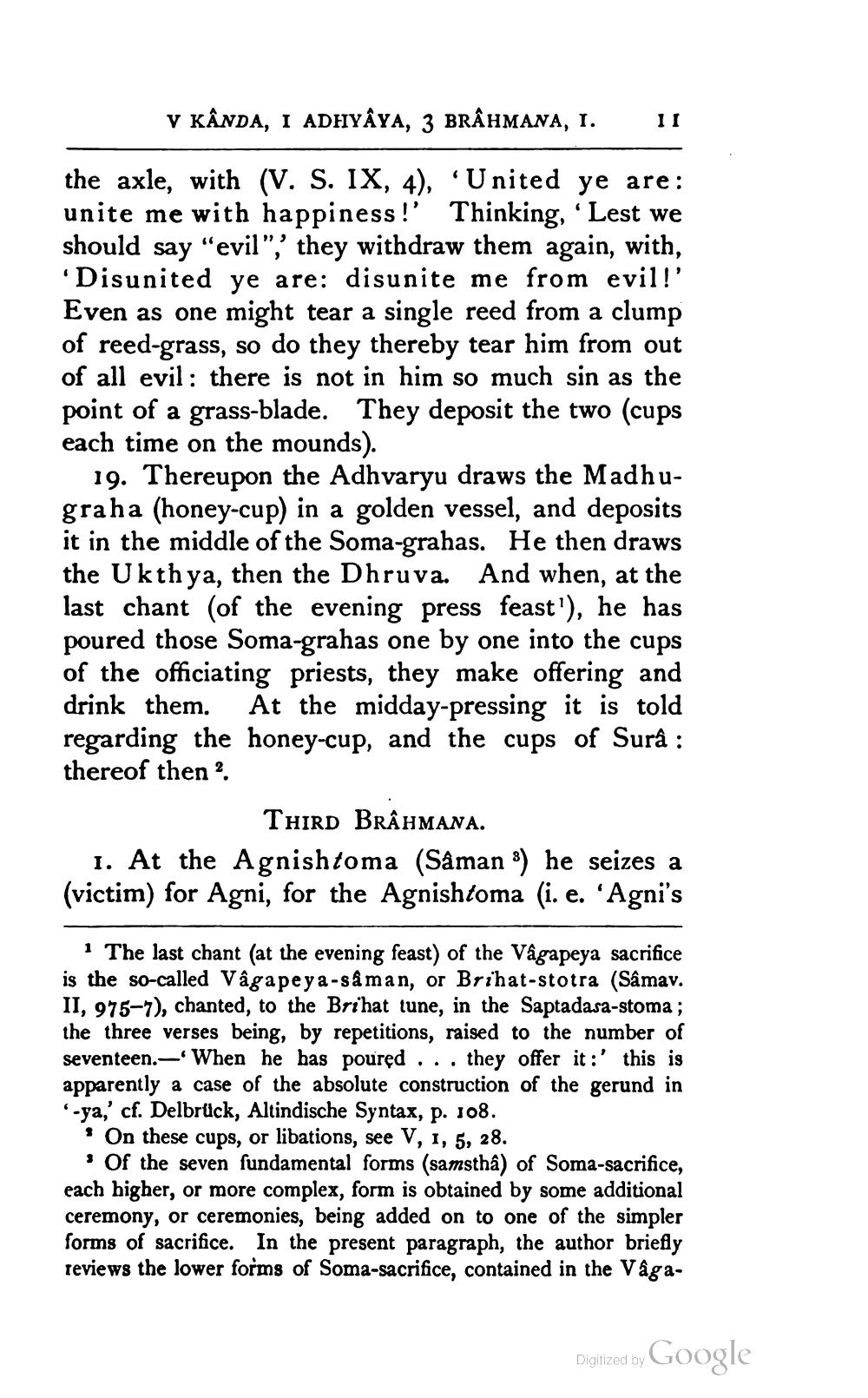________________
V KÂNDA, I ADHYAYA, 3 BRÂHMANA, I.
11
the axle, with (V. S. IX, 4), United ye are: unite me with happiness!' Thinking, 'Lest we should say "evil", they withdraw them again, with, 'Disunited ye are: disunite me from evil!' Even as one might tear a single reed from a clump of reed-grass, so do they thereby tear him from out of all evil: there is not in him so much sin as the point of a grass-blade. They deposit the two (cups each time on the mounds).
19. Thereupon the Adhvaryu draws the Madhugraha (honey-cup) in a golden vessel, and deposits it in the middle of the Soma-grahas. He then draws the Ukthya, then the Dhruva. And when, at the last chant (of the evening press feast'), he has poured those Soma-grahas one by one into the cups of the officiating priests, they make offering and drink them. At the midday-pressing it is told regarding the honey-cup, and the cups of Surâ : thereof then?
THIRD BRAHMANA. 1. At the Agnishtoma (Sâman 3) he seizes a (victim) for Agni, for the Agnishtoma (i. e. 'Agni's
1 The last chant (at the evening feast) of the Vagapeya sacrifice is the so-called Vâgapeya-saman, or Brihat-stotra (Sâmav. II, 975–7), chanted, to the Brihat tune, in the Saptadasa-stoma; the three verses being, by repetitions, raised to the number of seventeen.- When he has poured ... they offer it :' this is apparently a case of the absolute construction of the gerund in '-ya,' cf. Delbrück, Altindische Syntax, p. 108.
* On these cups, or libations, see V, 1, 5, 28.
. Of the seven fundamental forms (samsthâ) of Soma-sacrifice, each higher, or more complex, form is obtained by some additional ceremony, or ceremonies, being added on to one of the simpler forms of sacrifice. In the present paragraph, the author briefly reviews the lower forms of Soma-sacrifice, contained in the Våga
Digitized by Google




